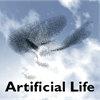复杂性、人工生命和人工智能。
IF 1.5
4区 计算机科学
Q4 COMPUTER SCIENCE, ARTIFICIAL INTELLIGENCE
引用次数: 0
摘要
复杂性、人工生命(ALife)和人工智能(AI)等科学领域在历史、概念、方法论和哲学上都有共同之处。虽然它们的起源可以追溯到 20 世纪 40 年代控制论的诞生,但只有在现代信息技术普及之后,它们才得以正常发展。在这一视角中,我对这些领域的期望和局限性进行了个人化(因此有失偏颇)的阐述,其中一些期望和局限性源于形式系统的局限性。我用相互作用、自组织、涌现和平衡来比较复杂性、ALife 和人工智能的不同方面。即使文章的轨迹受到我个人经历的影响,但我希望所提出的一般性问题(这些问题比答案更重要)将有助于协调这些领域的努力,克服或接受它们的局限性。本文章由计算机程序翻译,如有差异,请以英文原文为准。
Complexity, Artificial Life, and Artificial Intelligence
The scientific fields of complexity, Artificial Life (ALife), and artificial intelligence (AI) share commonalities: historic, conceptual, methodological, and philosophical. Although their origins trace back to the 1940s birth of cybernetics, they were able to develop properly only as modern information technology became available. In this perspective, I offer a personal (and thus biased) account of the expectations and limitations of these fields, some of which have their roots in the limits of formal systems. I use interactions, self-organization, emergence, and balance to compare different aspects of complexity, ALife, and AI. Even when the trajectory of the article is influenced by my personal experience, the general questions posed (which outweigh the answers) will, I hope, be useful in aligning efforts in these fields toward overcoming—or accepting—their limits.
求助全文
通过发布文献求助,成功后即可免费获取论文全文。
去求助
来源期刊

Artificial Life
工程技术-计算机:理论方法
CiteScore
4.70
自引率
7.70%
发文量
38
审稿时长
>12 weeks
期刊介绍:
Artificial Life, launched in the fall of 1993, has become the unifying forum for the exchange of scientific information on the study of artificial systems that exhibit the behavioral characteristics of natural living systems, through the synthesis or simulation using computational (software), robotic (hardware), and/or physicochemical (wetware) means. Each issue features cutting-edge research on artificial life that advances the state-of-the-art of our knowledge about various aspects of living systems such as:
Artificial chemistry and the origins of life
Self-assembly, growth, and development
Self-replication and self-repair
Systems and synthetic biology
Perception, cognition, and behavior
Embodiment and enactivism
Collective behaviors of swarms
Evolutionary and ecological dynamics
Open-endedness and creativity
Social organization and cultural evolution
Societal and technological implications
Philosophy and aesthetics
Applications to biology, medicine, business, education, or entertainment.
 求助内容:
求助内容: 应助结果提醒方式:
应助结果提醒方式:


